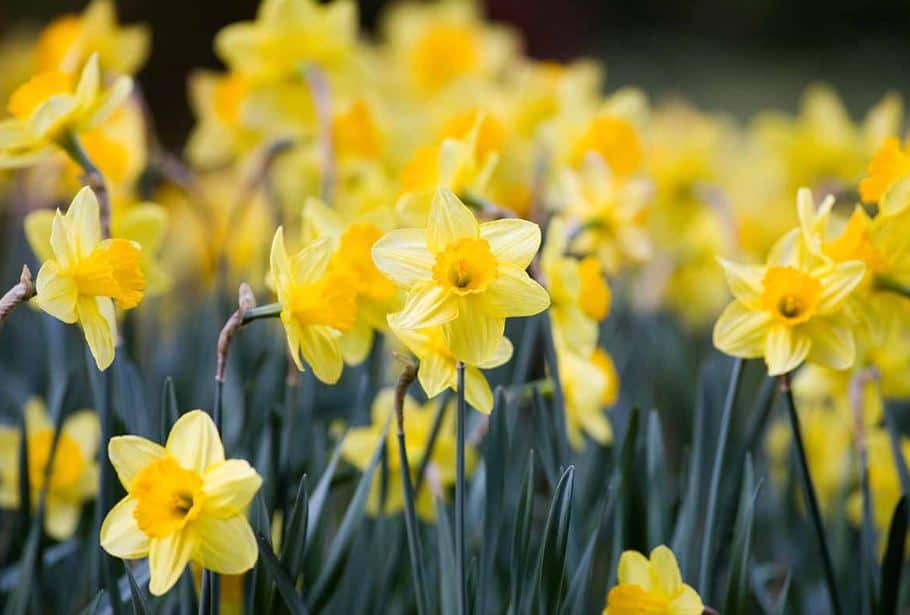One of the first spring bulbs to emerge with their cheery, yellow heads before other plants begin to bloom is daffodils. But what should you do with the leaves after the bloom has faded? After the bulb has bloomed, some people tie up the leaves, while others braid the daffodils. Which is true, and is either approach-wise? Continue reading to find out what to do with daffodil leaves after bloom, if anything.

Should Daffodils be tied after flowering?
Daffodil flowers maintain their vibrancy and color for four to six weeks. Following that, the foliage grows less upright and finally turns yellow.
Despite the plants’ less-than-tidy appearance, waiting until the foliage is trimmed back after the flowers have faded is important. The bulb is, at this point absorbing solar energy via the leaves. The next year, this energy is employed to create blossoms and foliage.
Therefore, if you remove the leaves as soon as the bloom fades, you prevent the plant from having an opportunity to refuel. A bulb will not blossom the next year as a consequence.
What about tying it back or braiding the foliage? The capacity of the bulb to replace its food supply needs to be improved, although this may make the plant seem neater in the garden. So, let the foliage naturally die down before cutting it back if you want beautiful daffodils.
The specialists advise waiting until July 4th to touch the leaf so that the plant can absorb enough energy. Eight weeks after the bloom fades, the leaves will have become brown by then. Plan to place perennial plants 3 to 6 inches (8-15 cm) from the bulbs to conceal unattractive foliage. The perennials will expand as the foliage withers, effectively hiding the ugly leaves.
Daffodil Post-Bloom Care
Remove or deadhead the flowers after they have faded. By doing this, the plant will be prevented from producing seed, which uses energy that would otherwise be saved in the bulb for the next year’s blooms.
After the flowers have faded or when you begin deadheading, apply a balanced fertilizer. A fertilizer is considered balanced if it contains equal nitrogen, phosphorus, and potassium.
You may dig the bulbs up to transport or store them if you’d like when the foliage has died down. Once the dirt has been removed, carefully brush it off and let it air dry in a cool, dark place. The bulbs should be spread out in a single layer with room in between.
Remove any offsets (bulblets) as they have dried since they will sprout new plants the following year. Throw away any broken bulbs. The dried bulbs should be kept until planting season in the autumn in a cool, dark, dry place.

